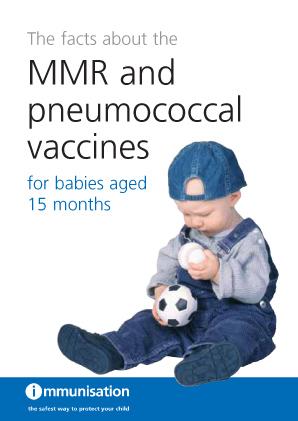Children and young people must be protected against measles

The Public Health Agency (PHA) is warning parents about the importance of protecting their children against the serious infectious disease, measles, which can be life-threatening and spread to those who are unprotected.
Although most common in children, it can occur at any age. Measles is very infectious and can be caught either through direct contact with an infected person, or through the air when the patient coughs or sneezes.
The PHA can confirm there have been 2 associated cases of measles in the past couple of weeks. These cases were associated with a volunteer youth work initiative which took place over a weekend.
The PHA has written to all volunteers advising them if not already vaccinated to go to their GP for an MMR vaccine as soon as possible. The PHA would advise anyone who feels at all unwell should stay at home as this is an infectious condition even before the associated rash develops.
Dr Richard Smithson, Consultant in Communicable Disease Control for the PHA, said: "We would also emphasise that it is never too late to vaccinate and would encourage children and young people of all ages at least until their early twenties to ensure that they have had two doses. It is vitally important to ensure children and young people's vaccinations are up to date, particularly if they are in group settings.
"In Northern Ireland we have had high uptake levels for MMR, which is why we have seen very few case of measles compared to both the rest of the UK and the Republic of Ireland. However, these cases remind us that there is no room for complacency."
Around 9-11 days after being in contact with the measles infection, the following symptoms begin to appear:
* Cold-like symptoms, such as runny nose, watery eyes, swollen eyelids, and sneezing;
* Red eyes and sensitivity to light;
* A mild to severe temperature, which may peak over 40.6C (105F) for several days. Temperature may fall after several days, but may go up again when the rash appears;
* Tiny greyish-white spots (called Koplik's spots) in the mouth and throat;
* Tiredness, irritability and general lack of energy;
* Aches and pains;
* Poor appetite;
* Dry cough;
* Red-brown spotty rash that appears 3-4 days after first symptoms, and lasts for up to eight days. The spots usually start behind the ears, spread around the head and neck, and after 2-3 days spread to the legs and the rest of the body. The spots start small but quickly get bigger and often join up together. Similar looking rashes may be mistaken for measles, but measles has a range of symptoms, not just a rash.
Most childhood rashes are not measles but you should consult your GP without delay if:
* you suspect it is measles;
* symptoms worsen;
* temperature increases to above 38°C;
* temperature stays high after other symptoms have gone.
Contact the PHA Press Office on 028 9031 1611.
